Inside the NYC Mansion of Doomed Railroad Tycoon You Can Now Tour
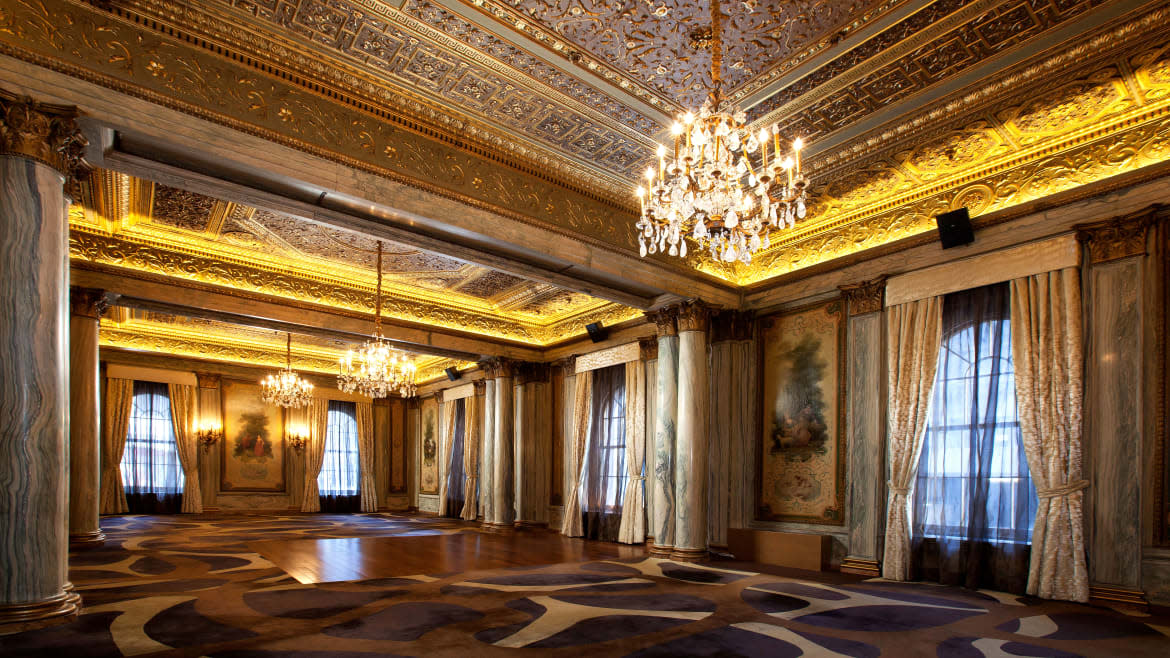
- Oops!Something went wrong.Please try again later.
- Oops!Something went wrong.Please try again later.
Of the many treasures to be found in the swelling stacks at the Library of Congress, one of my favorites is a set of books from the early 1880s that belonged to Alexander Graham Bell. They have nothing to do with the telephone, however, nor technology generally. No, these books so hefty they must be brought to your reading desk on wheels, are of houses.
Artistic Houses: Interior Views of a number of the Most Beautiful and Celebrated Homes in the United States was published in 1883 by George William Sheldon with a run of just 500 copies. Bell’s was number 358. It is a window into American splendor before the third generation of Vanderbilts thrust domestic architecture fully into the palatial Beaux-Arts era. Most of the rooms are peak Victorian–cluttered, every inch covered in suffocating detail. Louis Comfort Tiffany, then at his peak, did many of the interiors, including the White House. Many names are recognizable: Morgan, Flagler, Field, and Tilden. There are glimpses, though, of what is to come. One palatial home in particular, constructed just in time for publication, was a harbinger–Villard House.
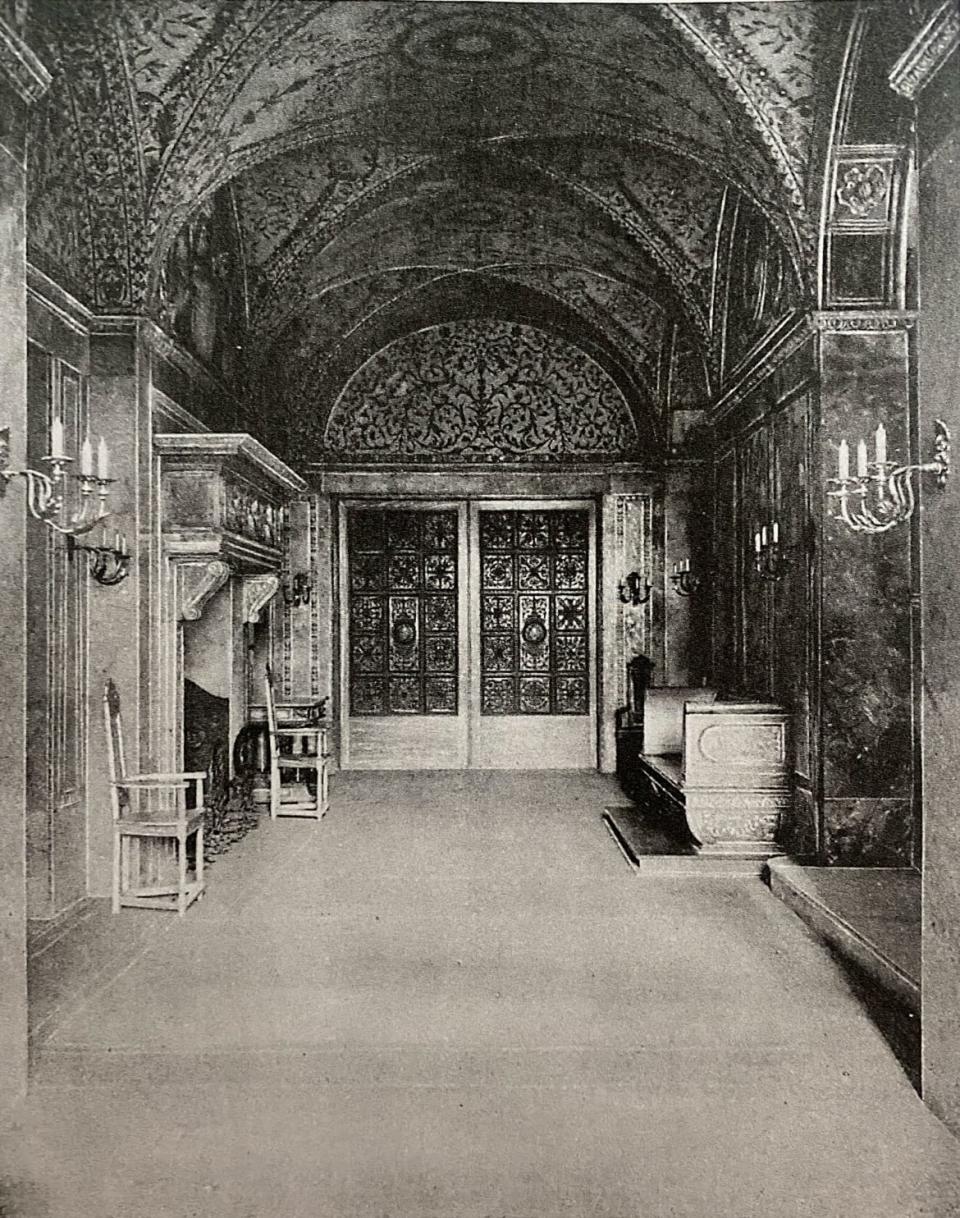
The Villard Mansion.
Gossip Girl might be how most people today recognize its imposing brownstone edifice, as it was the exterior shot of Chuck Bass’s hotel quarters. But HBO’s The Gilded Age is why I found myself here recently. The show’s success has stimulated a previously insipid interest in America’s own one-time aristocracy—we always seemed to prefer period pieces from turn-of-the-century England and France—into full fledged obsession. Capitalizing on that obsession, Lotte New York Palace Hotel, the occupant of the mansion and its stark black tower rising from its rear, is offering exclusive tours of the property as well as neighboring St. Patrick’s Cathedral.
Standing on Madison Avenue between 50th and 51st and gazing on the front of the mansion, two things press on the mind. The first is the size, “perhaps unequaled,” Sheldon wrote “by that of any similar edifice in the city.” Even in New York, where physical limitations seem more like failures of imagination, the house seems stupendously large. The second is the color. The Italian palazzo-esque facade, inspired by the Palazzo della Cancelleria in Rome, is not clad in limestone or marble or granite but rather traditional brownstone. It creates an effect that, as one famous critic said at the time, is “very quiet, a little cold, perhaps a little tame.” While largely panned when it was first completed, over the ensuing century it would become one of the city’s more elegant and beloved mansions.
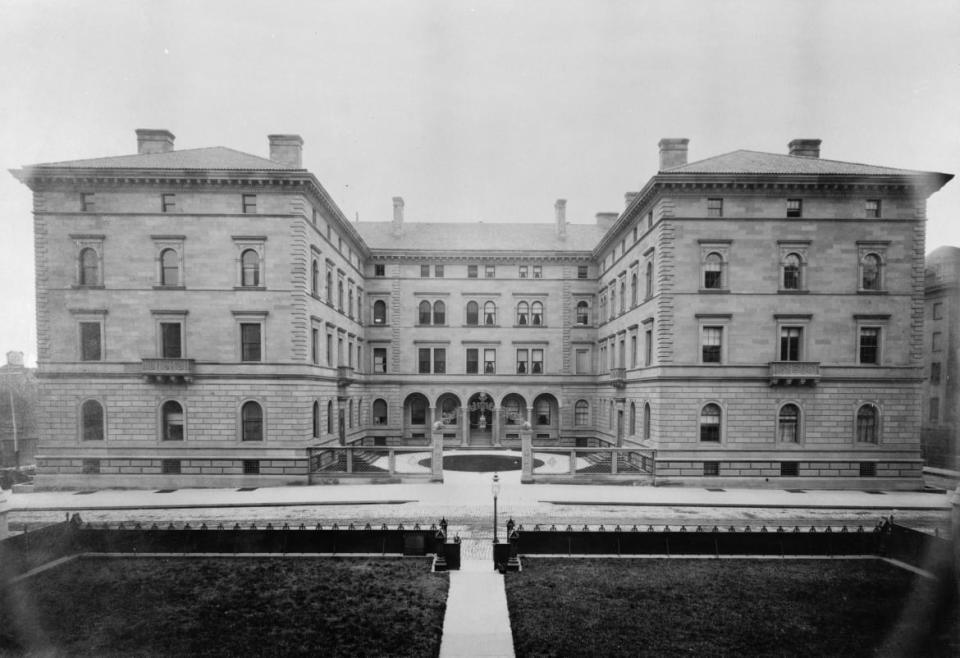
The Villard Houses, 451-457 Madison Avenue & 24 East Fifty-first Street, New York County, NY.
The tour, which is at a somewhat sadistic 10 a.m. on Saturday mornings, meets in the historicist entrance hall, the centerpiece of which is the exquisite red marble fireplace complex designed by Augustus Saint-Gaudens with a pair of basins on either side presided over by fearsome-looking fish that appear determined to break free of the stone. The fireplace has been moved here from the dining room, which was opened up for the hotel’s restaurant.
“Want to join a tour?” the guide queries a bleary-eyed twentysomething hurrying by who barely stammers out something about how he had to get to family breakfast. Undeterred, the enthusiastic guide ushers the group outside to the central courtyard and lets us all in on one possibly disappointing but salient detail—this mansion was not, in fact, one single house.
Villard Houses, as they are properly called, was made up of six different residences—a configuration in line with European palaces and the other mega-mansion in the city to which it was compared, William H. Vanderbilt’s Triple Palace.
Henry Villard was born in Bavaria in 1835 and came to the U.S. as a teenager. His first few decades here were spent mainly as a journalist for the New York Herald, New York Tribune, and Chicago Tribune. He was good friends with the abolitionist William Lloyd Garrison and married his daughter, Fanny. Villard’s fabulous fortune came later in life as he became a go-between for German investors in American railroads, leveraging that into control of a number of companies himself. He also owned the New York Evening Post, the liberal The Nation, and was president of GE predecessor Edison General Electric Company. In 1881, a year before the fictional show The Gilded Age starts, he paid St. Patrick’s Cathedral $260,000 for a plot of land on its eastern side.
A central plot point of the show is the trauma inflicted on old money New York by the fictitious Russell family’s lavish new mansion—designed by Stanford White of McKim, Mead & White. (White, of course, is perhaps most famous now for being shot and killed at Madison Square Garden by Harry Thaw, who accused White of grooming and raping his wife, Evalyn Nesbit.) The Russells’ money came from railroads, and one of items on the long and sometimes petty list of grievances anal antiquarians have with the show is that Stanford White completing a palatial Beaux-Arts mansion in New York City in 1882 is a bit of timeline legerdemain—he was still mostly doing interior work or romantic houses and the firm wouldn’t take off for a few more years. One of the signature projects that launched their careers and heralded the more refined, full of swagger, baronial residences to come was the Villard Houses.
Standing out front, whether inside the courtyard or facing the original fence and Florentine lantern, there are a number of things different about this manse than others of its era. One is its remove from the street—the fence and the courtyard lend an aspect of the uninviting to the place. The second is the address. Villard chose Madison Avenue when nearly all the show palaces over the next three decades would go up on Fifth Avenue. Villard’s house within the complex was on the southern arm. The entrance hall is decorated with walls of polished marble and an elaborate mosaic-decorated groin vaults for a ceiling. Ignore, if you can, the giant champagne case. If you went immediately right, you’d enter the former reception room of pale blue marble and richly decorated plaster ceilings.
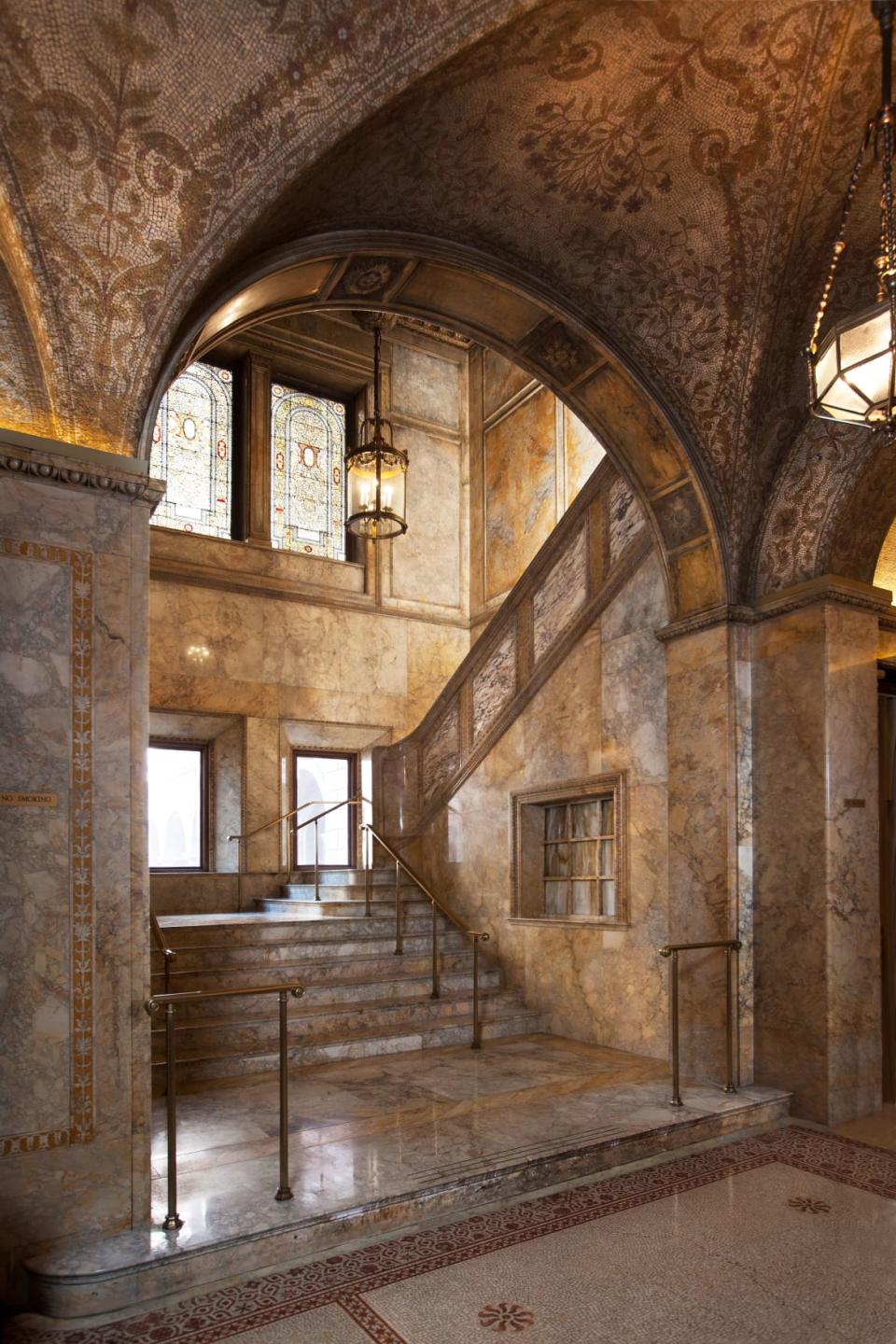
The Marble Stairwell of the Villard Mansion.
While the room is full of Gilded Age splendor, the most fun thing about it might be what takes place inside its walls every Friday night—a magic show. It was one of the more popular forms of entertainment in the late 19th century, and Villard himself was an amateur magician, so it’s fitting that Steve Cohen’s famed Chamber Magic show takes place there. I was apprehensive when a publicist asked if I’d want to go. Magic shows make me nervous that I’ll die of second-hand embarrassment if the magician messes up. Not only did Cohen clear the low bar of not messing up, his showmanship and tricks are a welcome and needed space to recharge our sense of wonder.
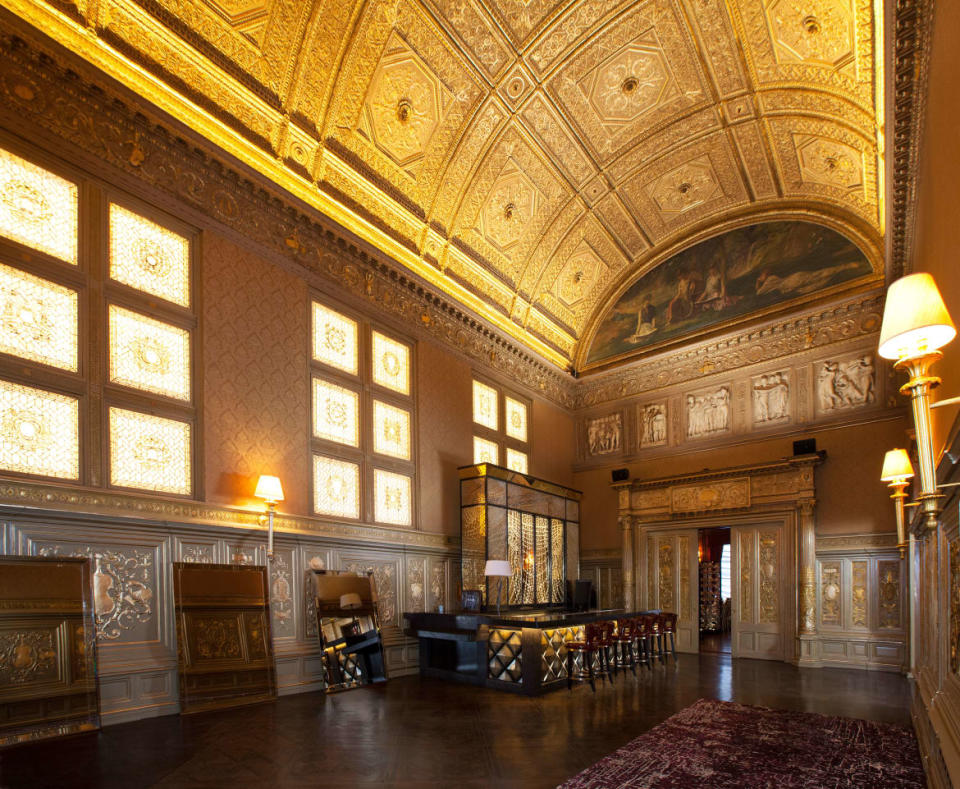
The Gold Room of the Villard Mansion.
Opposite the drawing room is perhaps the hotel’s most famous room–the Gold Room. In the original photos Sheldon took for Artistic Houses, it’s the saddest of spaces: a gargantuan music room devoid of life and furnishings. Today, it’s resplendent in, well, a looooot of gold. Maybe just the most gilded of all Gilded Age rooms in the city, and a popular bar just outside the hotel’s main restaurant.
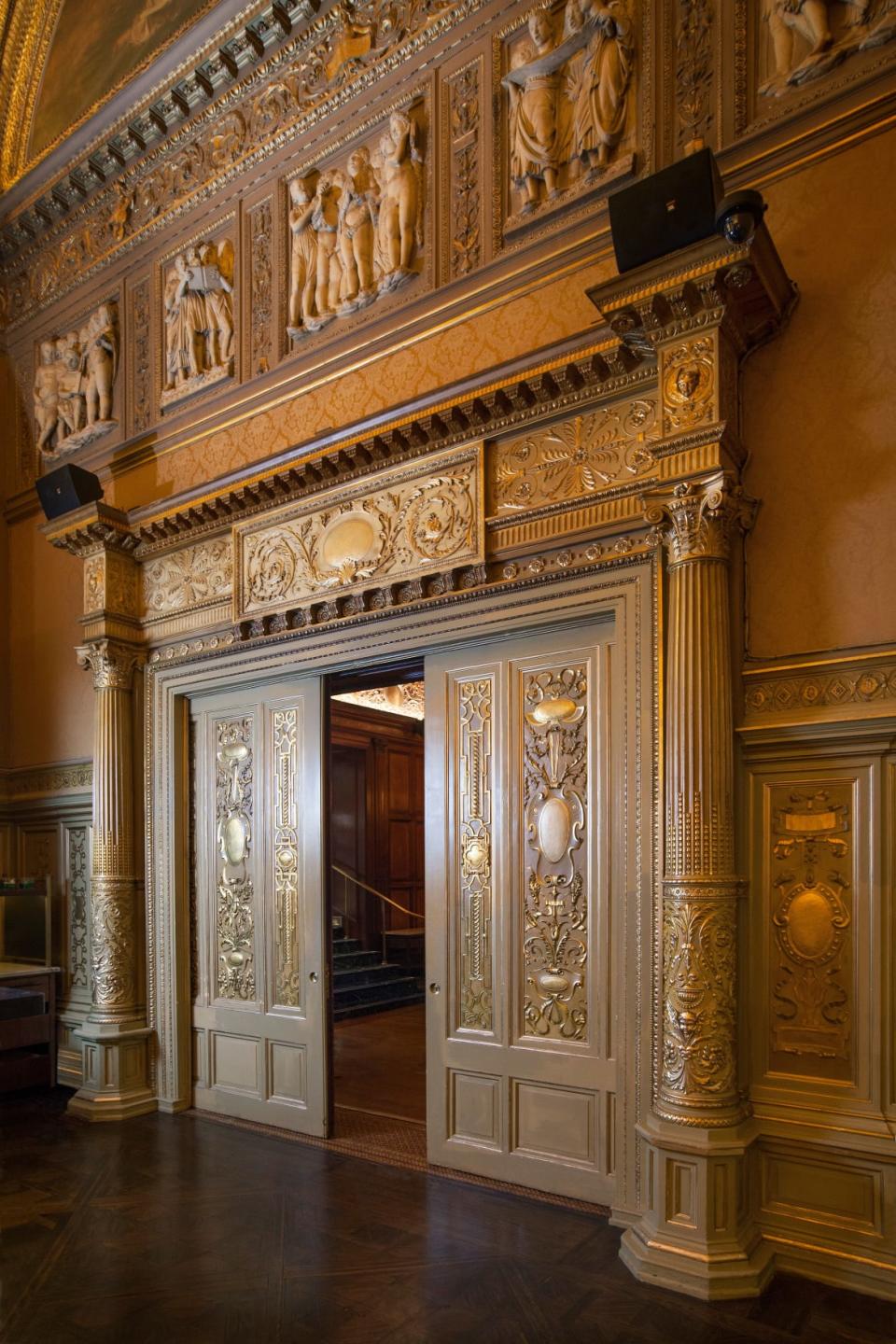
The Gold Room's door of the Villard Mansion.
Back out in the center of the hall is an immaculate staircase of glossy Siena marble that leads up to the triple drawing room and the library. As you walk up its steps, take a minute to soak in the incredible craftsmanship of Augustus Saint-Gaudens zodiac clock on the wall and stained glass ceiling by John La Farge. The hotel has spent a lot of money restoring the historic rooms, but long gone due to a remodel by the house’s second owners are the original panels in the drawing room that were of inlaid white mahogany, satinwood, holly, and mother of pearl. (The hotel has also kept the strange ’80s-esque printed re-creation of the original ceiling fresco above.) The library, though, with its cozy dark woods and barrel-vaulted ceiling with murals by George W. Breck still retains an atmosphere of hideout-from-the-masses, and I couldn’t help but hope it’s someday turned into an actual library or library bar for guests. Currently, both rooms are event spaces the hotel rents out.
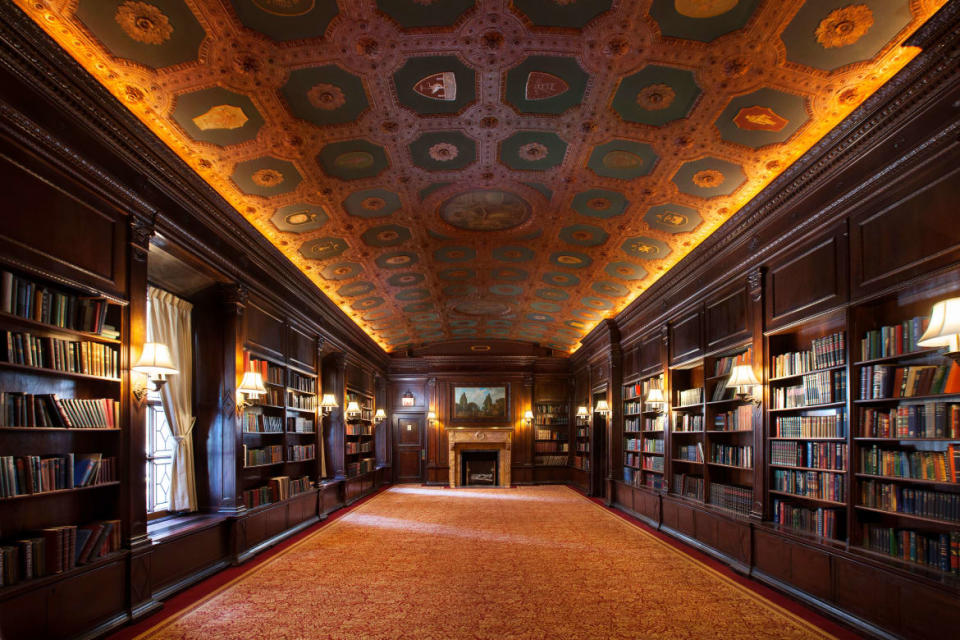
The Library of the Villard Mansion.
In September 1883, Villard’s Northern Pacific railroad completed the longest single rail line in the world from the Great Lakes to the Pacific. His mansion in New York City was nearly complete. But it was all about to come undone. The railroad project was massively over budget, and Villard’s fall was fast. His family moved into the meagerly decorated house as the other houses in the complex were still being built. Angry New Yorkers, convinced the whole complex was for Villard, descended on it to protest yet another robber baron causing financial ruin. The history from there on is complicated, as there is the history of the Villard residence itself and the complex as a whole. Despite Villard rebuilding his fortune in the latter part of the 1880s, the residence was sold to Whitelaw Reid, the editor of the New York Tribune. The Reids hired Stanford White to redecorate and held onto the house until the 1930s.
Joseph P. Kennedy owned one of the houses at one point, and reportedly intended it for a family residence but never moved in. By then, most of the grand mansions in the neighborhood were being torn down to make way for towers, and the super wealthy were fleeing further uptown. By the 1960s the complex was owned by Random House on one side and the Archdiocese of New York on the other. In 1971, the Archdiocese bought out Random House and used it all for offices—which was fortunate in some ways as there wasn’t much destruction.
That same year, mega-developer Harry Helmsley married one of his employees, Leona. Leona liked the finer things and was a tabloid fixture for her despotic ways. She was dubbed the “Queen of Mean” and gave us the line: “We don’t pay taxes, only the little people pay taxes.” Leona is said to have pushed Harry into developing luxury hotels, including the Park Lane where they lived. They also agreed to a 99-year lease with the Archdiocese with the intent to redevelop the Villard Houses into a hotel with a 51-story tower. Given the horrors enacted by many a developer, then and now, it’s astounding that what resulted preserved much of the Villard residence interior and the building’s historic details. Even better, the average passerby wouldn’t likely ascertain just from looking at the tower by Emery Roth & Sons behind it attached and built on the demolished back half of the Villard Houses.
All of the west-facing rooms in the tower have views overlooking St. Patrick’s Cathedral, and so in addition to the free tours of the residence, the Lotte New York Palace Hotel is also offering guests guided tours of the cathedral (for a $500 donation). On the tour you can see things like the dressing room fo the archbishop that four popes have used, get little design details created by the architect James Renwick pointed out (Renwick was one of America’s first great architects), and colorful stories like the fight over the body of Fulton Sheen, the first big televangelist.
Little remains of the Gilded Age palaces south of Central Park. Instead, the most interesting residences in the area are those of our new Gilded Age—the supertalls, including the just completed Steinway Tower at 111 West 57th designed by SHoP. One of the few historic homes, the Plant Mansion, is now the Cartier flagship and as such unapproachable for us mere mortals. But for those looking for a less intimidating taste of that era, set aside your Saturday morning for a pleasant tour—or just grab a drink underneath the shining vault of the Gold Room.
Get the Daily Beast's biggest scoops and scandals delivered right to your inbox. Sign up now.
Stay informed and gain unlimited access to the Daily Beast's unmatched reporting. Subscribe now.

